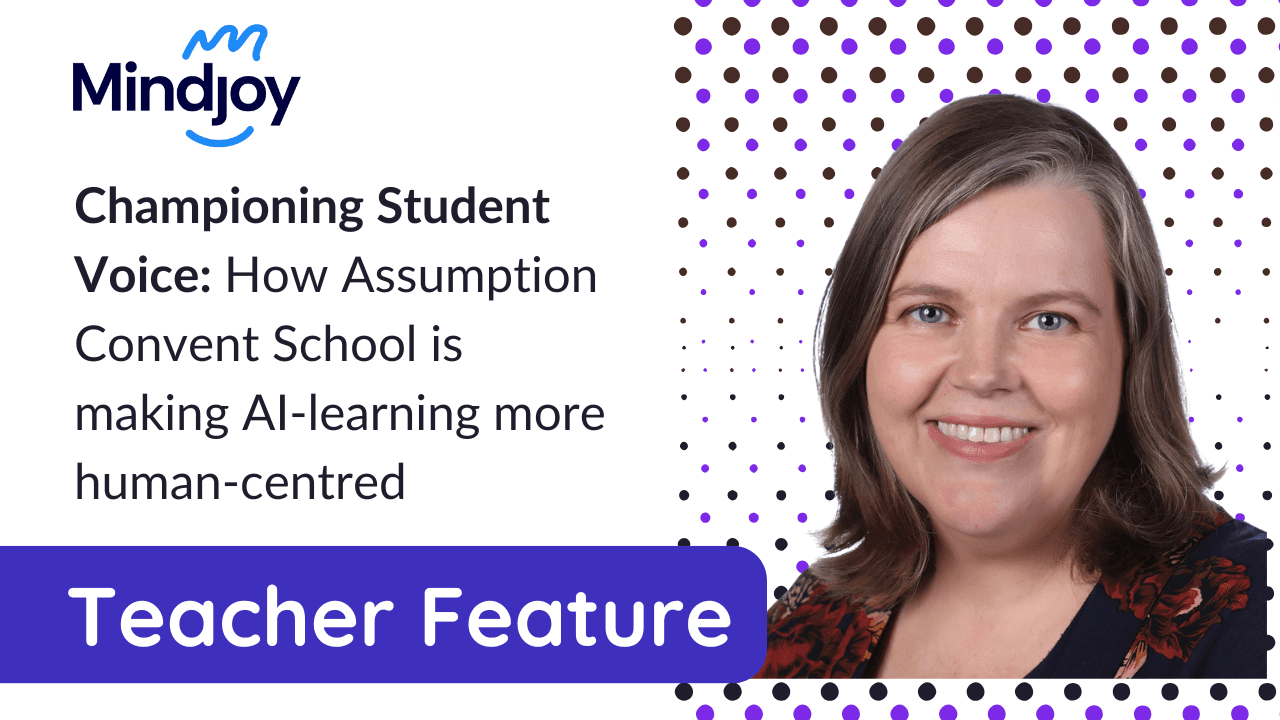Championing Student Voice: How Assumption Convent School is making AI-learning more human-centred

"Students will take shortcuts if they exist. This [referring to cheating] isn't a new problem, but AI has removed the friction. The question is: how do we turn that into something powerful?"
Meet Laurietta Goosen, an innovative school leader who discovered that when students confessed "I haven't done my homework in three weeks. AI has done all of it," it wasn't a crisis – it was an opportunity. Instead of banning AI, she transformed it into the ultimate teaching ally, creating a feedback system that has her students actually excited about revision and learning.
The "Aha!" Moment 💡
It started with brutal honesty. When teachers at Assumption Convent created safe brave spaces for students to share their real experiences, the confessions poured out. Students were using AI for everything – from essays to maths homework. But rather than panic, they saw something remarkable: transparency.
"It's fascinating what students will share with their teachers, given the platform and permission to do so," she reflects. This openness became the foundation for their human-centric approach to AI-enhanced teaching and learning.
Some of Laurietta's protips to flip the narrative
- Focusing on feedback not just marks
Any teacher who has spent hours writing detailed feedback on student work, leaving thoughtful comments and specific suggestions will know that soul destroying moment when you return lovingly prepared papers and watch students do one thing – look at the final mark and move on.
All that careful feedback? Ignored. Students end up missing the actual learning because they are fixated on the number.
Laurietta observed the same thing "If you return a test to a high school student, they look at the mark, decide whether it's good enough, and then move on without reengaging with the material," she explained.
The adjusted approach → a markless feedback loop
Laurietta (who's also a Computer Applications Technology educator and HOD for ICT) built AI tutors that give students detailed feedback but hide the final grade. Students upload their work, get comprehensive suggestions, and then—here's the clever bit—they guess their grade and debate it with the AI.
The result? Students actually read the feedback. They have to, because that's all they get initially. The learning happens first; the mark comes later.
- Overcoming the revision bottleneck
Personalised practice helps most but takes the most time to create. Which means the students who need it rarely get it. As Laurietta admits, “[Without AI] this would have been yet another time-consuming task that I possibly would not have gotten around to doing at all.”
The opportunity → instant activity generation
Now she can snap a photo of student work, tell the AI what to target, and get a custom exercise in minutes. What was rare is now routine, and every struggling student gets the practice they need.
- Closing the support gap
Some students get help from tutors (the human ones you have to pay for) or family members. Others work alone, often late at night when teachers aren’t available and the reality is that those who need the most support are the ones who usually get the least.
The opportunity → always-on study buddies
Mindjoy AI tutors are available 24/7. Whether it’s 10:30 at night after putting siblings to bed, or during homework struggles, the tutor offers patient, judgment-free support. For many students who previously had nowhere to turn this is a real academic safety net.
- Building a transparent AI culture
Laurietta’s impact isn’t about the technology – it’s about the mindset behind it. She made AI use open and purposeful at every level:
- With students: She shows when and how she uses AI, modelling responsible usage.
- With parents: She gave families new conversation starters: "How did you use AI for your homework today? And if not, why not?"
- With leadership: She helped develop dynamic AI policies that evolve with the technology, accessible to the entire school community for ongoing feedback.
For fellow school leaders 💭
Laurietta emphasises "We need to become fearlessly curious, outrageously courageous leaders who are willing to experiment,". Her three key questions for any educator/school leader considering AI integration are for them to consider:
- What should we let go of? Are we clinging to tasks that no longer serve learning?
- Where can AI remove friction? What could take minutes instead of hours?
- What leadership are we modelling? Are we demonstrating curiosity or fear?
One school leader's willingness to listen to her students changed everything. Laurietta didn't just solve a homework problem; she created a learning revolution that has students excited about revision and genuinely engaged with feedback. Her story reminds us that sometimes the biggest breakthroughs come from the smallest acts of courage.
The real winners in this story are the students who went from secretly using AI for shortcuts to openly engaging with it as a learning partner.
What are you doing to give your students a voice?
Join thousands of educators already using Mindjoy to create engaging, AI-enhanced learning experiences. Get started today and watch your students fall in love with learning again! 💫👩🎓


Engineer with a passion for Education and Technology